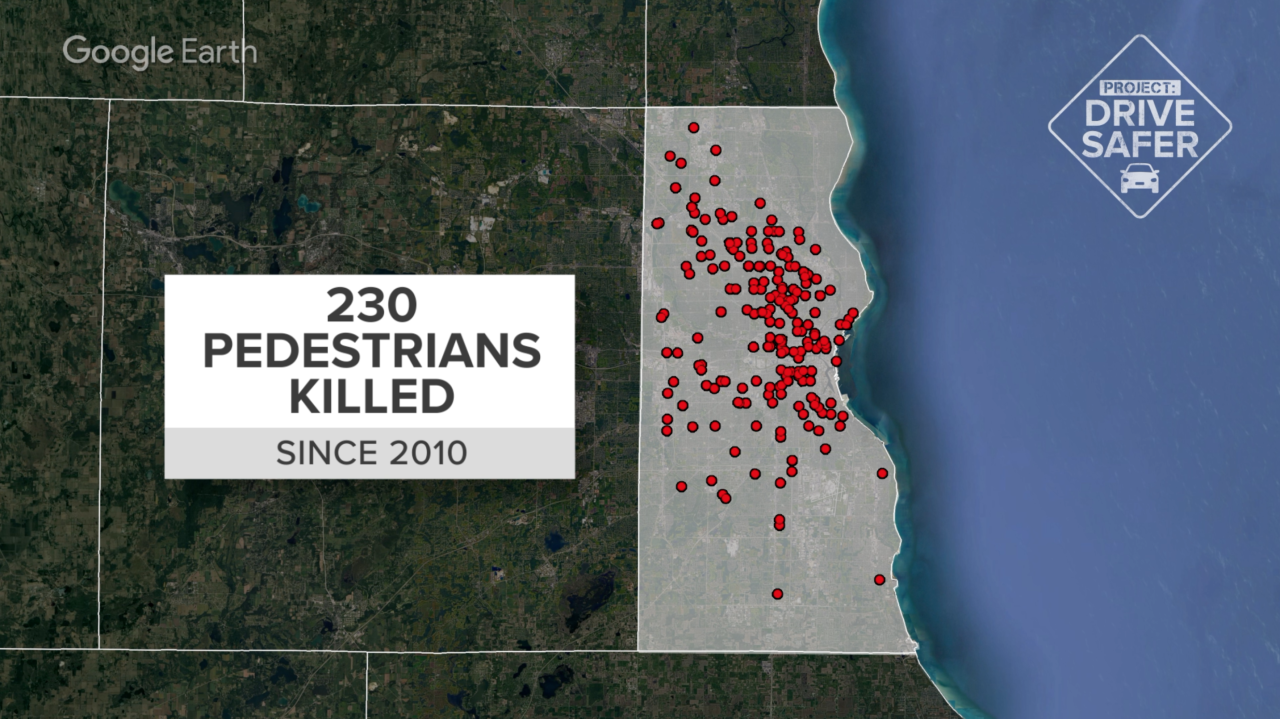MILWAUKEE — More pedestrians have been hit and killed this year in Milwaukee County than in any other year in the past two decades.
State crash data shows more than two dozen pedestrians have died in the county. 23 of whom lost their lives on the streets in the City of Milwaukee.
"It's just so sad that he had to go this way,” said Mae Holmes. "My brother crossed the street all the time and never got hit, none of that."
Holmes is preparing to host her first Thanksgiving without her brother William. He was crossing the street near his home at 49th and Hampton back in March when he was killed in a hit-and-run. Holmes says the hardest part is not knowing why it happened or who was behind the wheel eight months later.

“They don't really care,” she said. “If you cared then you would have stopped.”
William was one of 26 pedestrians who died in crashes so far this year in Milwaukee County. According to the Wisconsin Traffic Operations and Safety Laboratory data, it’s the most in more than 20 years.

Four of those pedestrians died on the same two-mile stretch of N. 35th Street from the Sherman Park neighborhood down to an intersection near Marquette University High School.
It isn’t just a local issue. Nationally, pedestrian fatalities reached a 40-year high in 2021. A study by the Governors Highway Safety Association found drivers across the country struck and killed nearly 7,500 people on foot in 2021. That’s a 12 percent increase from the year before.

“A 40 year high for pedestrian deaths should have us jumping out of our seats and making change,” said Vision Zero Network Executive Director Leah Shahum.
The Vision Zero Network is a nationwide campaign to help communities reach their goals of eliminating traffic fatalities. Shahum says dangerous driving behaviors are becoming more prevalent.
"We know that high speeds are the cause in about one-third of traffic fatalities nationwide and impaired driving another third, so that's a huge piece right there,” she said.
Shahum says the way urban streets were designed decades ago creates disparities seen today in traffic deaths. She says people who live in low-income neighborhoods are three times more likely to be killed on the roads.

"The good news is this is not out of our control,” she said. “I think what we're seeing is we're getting the results we designed for. You don't want to have a crosswalk a mile away and expect somebody to have to walk that mile to cross the crosswalk and get to a bus stop, right?"
Shahum says solutions have already been identified and some are underway in Milwaukee, like redesigning roads to force drivers to slow down and making sure crosswalks are marked, and offer additional protection for pedestrians by using infrastructure such as pinned-on curb extensions.
"Even timing the lights, the street lights at a slower pace can help everybody move along, but again more slowly,” Shahum said. “We certainly can add more time for people crossing the streets."
While there will inevitably still be crashes, Shahum says they will be less severe and people walking across the street will be less vulnerable.




